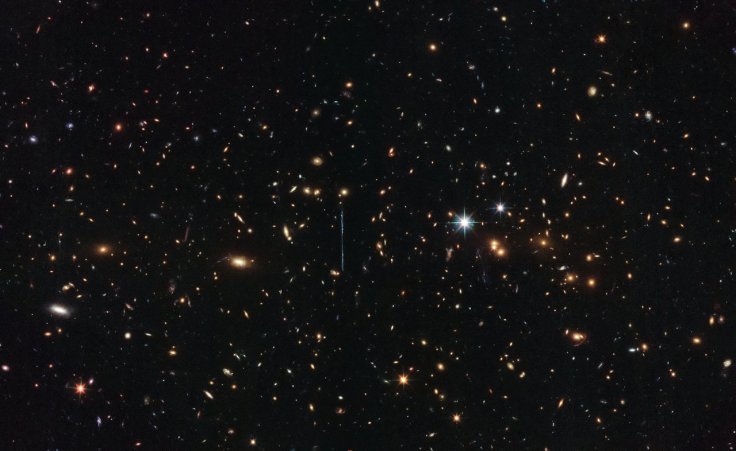
The radio telescope set up in Canada last year was able to detect a mysterious radio signal emanating from deep space at frequencies below 700 MHZ on July 25, keeping scientists busy to decipher the source of it.
Known as fast radio bursts (FRBs), the Canadian Hydrogen Intensity Mapping Experiment (CHIME) located in British Columbia received the signal now named FRB 180725A. FRBs are milliseconds-long bursts of radio emissions.
Just a decade ago, first such FRBs were tracked and the CHIME was solely set up to catch such signals from the deep space from sources such as bursts from magnetars, exploding black holes, and of course, highly advanced alien civilizations if there are any.
CHIME detected the FRB 180725A, followed by radio signals at much lower frequencies at 400 kHz, which are confirmed not to have originated anywhere on Earth but owe their origin somewhere in the celestial universe.
Scientists also believe that whatever produced the signal tends to be an extremely powerful extraterrestrial being. The signal has now been branded by the name 'FRB 180725A'. The first FRB was reported by Duncan Lorimer and his research student David Narkevic in 2007, believed to be definitely extragalactic. Since then, many such FRBs have been recorded with their origin usually outside the Milky Way. The last one reported in March by Parkes Observatory in Australia.
FRB signals were first observed in the year of 2001 with help of pulsar survey of the Magellanic Clouds but scientists and researchers didn't mention them until 2007 in their studies and discoveries.
Worlds biggest radio telescope detects two pulsars during trial runWorlds biggest radio telescope detects two pulsars during the trial run (Representational image)
What's CHIME?
CHIME stands for Canadian Hydrogen Intensity Mapping Experiment Telescope and has four 100-meter-long (328 foot) U-shaped cylinders to detect signals from the universe between 6 to 11 billion years old.
The unique design with the combination of highly advanced computing power can also serve as a time machine so that we can peek into the deep history of the universe and its mystery. The telescope can collect radio waves with wavelengths which range between 37 - 75 centimetres.
Apparently, it is said that all these signals come from the Milky Way but few of them are dated back to billions of years ago. The telescope receives a huge amount of data, which is equivalent to all the mobile network data of the world.
Also, it is believed seven quadrillion computer operations occur every second. With the help high-end equipment and the latest technology, it will be no surprise if human beings can discover aliens soon enough.









